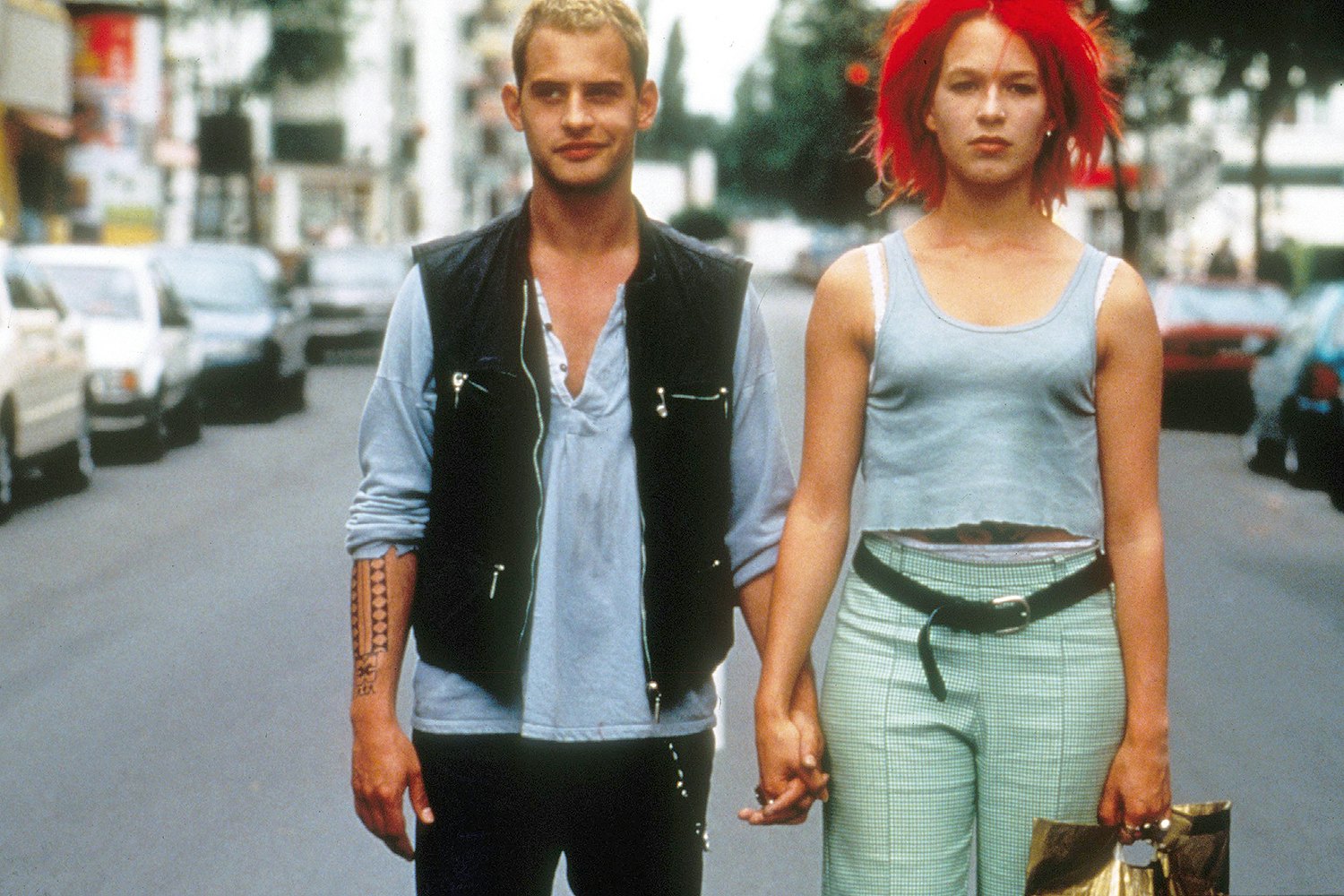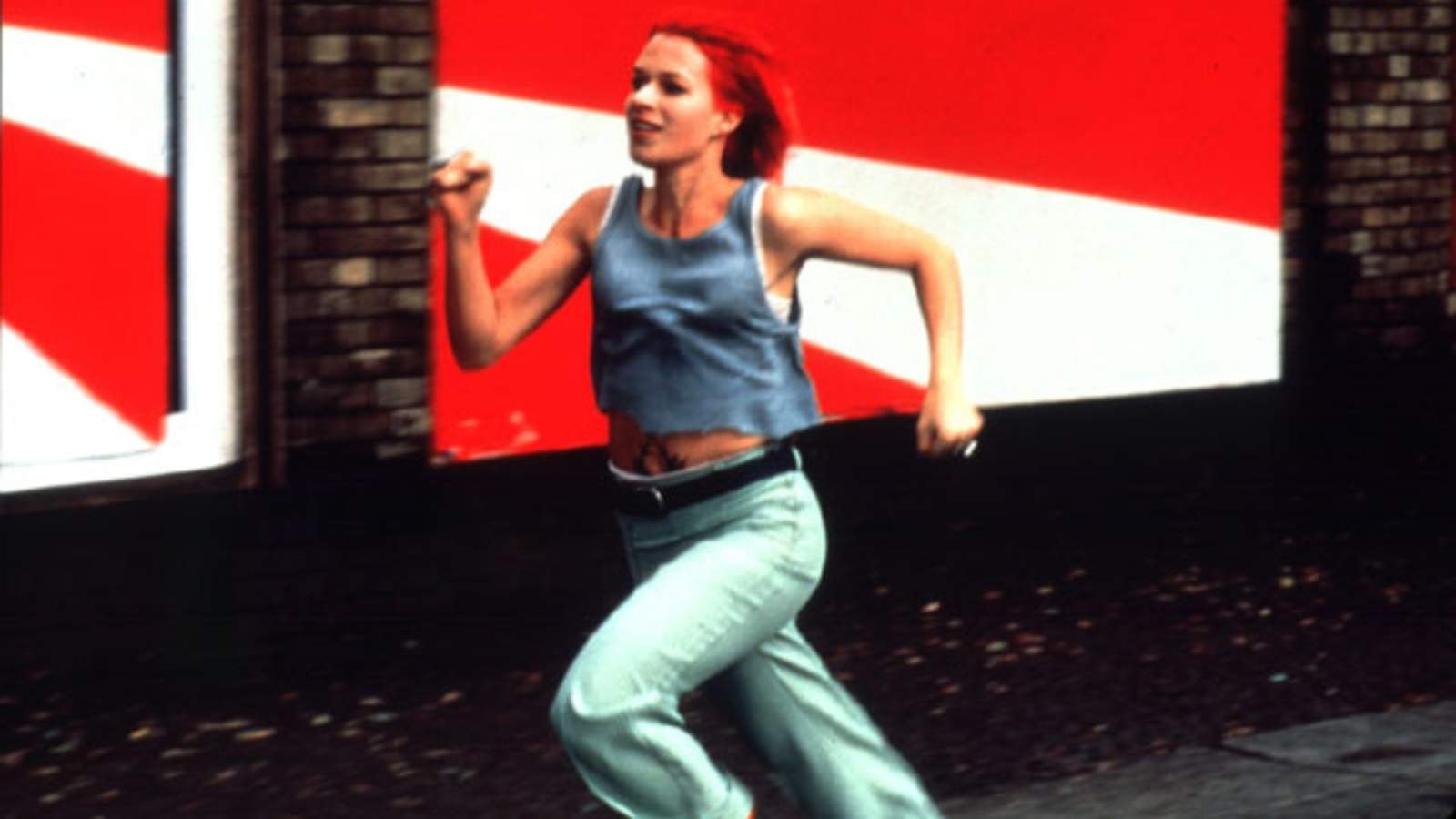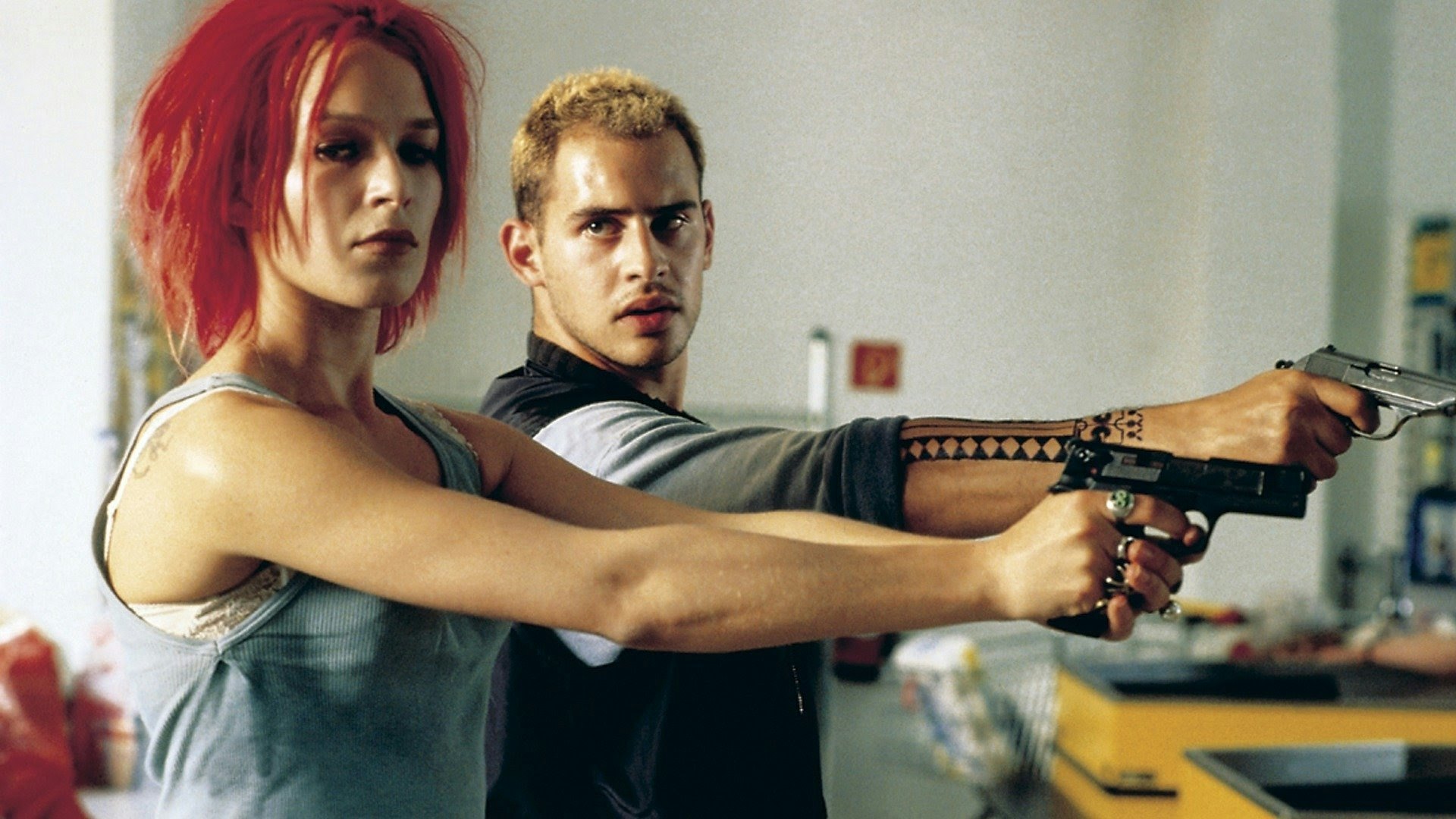
As far away as it may feel, the end of the ‘90s was a time of seismic cultural shifts and collective apocalyptic anxiety. The impeachment scandal roiled the Clinton administration, Princess Diana’s sudden demise dominated headlines across continents, and Y2K paranoia made the potential collapse of society loom large.
The decade’s pressure-cooker energy gave rise to one of the most innovative eras of independent and international cinema, with films such as Rushmore and Cronos propelling filmmakers like Wes Anderson and Guillermo del Toro into the spotlight. One movie in particular, though, a shot of adrenaline straight out of Berlin, encapsulates the sinking feeling of running out of time that defined the looming millennium, and its frenetic presentation can be traced to its impact on the contemporary indie scene.
At an unbelievably brisk 80 minutes, the brilliance of Run Lola Run is in its deceptive simplicity. Ember-haired Lola (Franka Potente) receives a call from her boyfriend Manni (Moritz Bleibtreu), who’s lost 100,000 Deutschmarks meant for his cutthroat gangster boss. She has exactly 20 minutes to scrape up the cash before Manni becomes a memory, prompting her to take off on foot through the streets of Berlin in a desperate bid to save his life. But as Lola discovers, hers is a quest of trial and error. Every fatal mistake respawns her in the Rat Race Simulator, and the clock never stops ticking.
The narrative’s cyclical and undemanding nature allows writer/director Tom Tykwer to play to his strengths, the most obvious of which is Franka Potente’s singular and electrifying performance. We’re given such a small window into her life, yet Lola feels solidly crafted and wholly alive. She’s stubborn and headstrong, albeit a bit of a burnout stoner, and throughout her many lives, we see the brutal lows and ear-splitting highs she’s willing to go through to ensure the survival of someone she cares for. The character could have just as easily been a blank slate, but Potente is so idiosyncratic and lovably chaotic that by the time the credits roll you feel like you’ve spent a few lifetimes alongside her.

From the bombastic animated opening credits onwards, most movies wish they could feel as intense; every single aspect of Run Lola Run’s construction makes viewers feel like they’re living the film. Mathilde Bonnefoy’s breakneck editing risks giving you whiplash, and Frank Griebe’s dizzying and kinetic camerawork is like being dropped into a pinball machine. Even the iconic score, a hypnotic time capsule of late ‘90s techno-trance, is designed to mimic the start-stop rhythm of Lola’s caper. It’s a perfect marriage of experimental instinct and high-octane crowd-pleasing appeal, and even in 2024 it still feels shiny and new.
For a movie with an elevator pitch as digestible as “Groundhog Day meets Dog Day Afternoon,” some surprisingly complex ideas are bubbling just beneath the surface. Lola runs into some of the same people over the course of her many different lives, and we see how each new interaction ripples out and changes their future through snapshot flashforwards. This elevates the film’s grounded stakes to existential and philosophical levels, and situates Lola as a kind of cinematic quantum superposition, the benchmark by which a fluctuating and anarchic universe settles into place. The experience she gains through each life is a depiction of the free will versus determinism debate so thorough that it could serve as an Intro to Theoretical Physics course.

Viewed more through a social lens, Run Lola Run feels prophetic in the face of an increasingly hyperconnected digital age. It’s almost ironic that a movie released in 1998 could so accurately capture the feeling of being supremely isolated while also being inextricably linked to everyone around you. In a way, the internet has made us all like Lola, living our lives as the Main Character in our own little escapades, unaware of how our encounters with those around us can subtly alter their lives ways.
Despite its relative obscurity, it’s impossible not to see how Run Lola Run’s ultra-cool influence bled into the independent filmmaking scene of the 2010s and 2020s. Would we have the erratic, anxiety-inducing thrillers of the Safdie Brothers without it? Would we have Gaspar Noé’s particular brand of surreal, existential intimacy? Even a new release like Challengers, with its mesmerizing techno score and visceral, experiential camerawork, offers parallels. By capturing a snapshot of the turn of the millennium’s energy, Tom Tykwer caught a glimpse of the future of filmmaking, and sent Lola running full-speed into the Hall of Cult Film Fame in the process.







